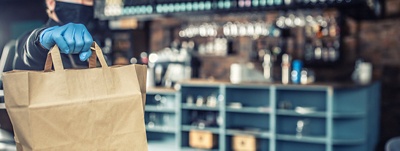Retail and hospitality companies have faced many challenges and suffered great losses in the pandemic, especially in the early months. Prolonged closures have caused bankruptcies and huge drops in revenue. But these disruptions have also sparked innovation, reinvention, and determination to push through and be better for it.
One sector of the hospitality industry that’s a shining example of this is quick-service restaurants (QSRs). QSRs, or “fast casual” as they’re also known, adapted their business and operating models on the fly, and rethought how they served their customers to keep their doors open and be profitable. Let’s explore a few examples and the practical lessons they’re taking to the future.
With some dining rooms forced to close overnight, QSRs quickly pivoted to focus on takeout and delivery, many through mobile ordering apps, contactless systems, and third-party applications. Similar to the effects on other industries, these rapid changes accelerated digital transformation by years in some cases. With no choice but to adapt to survive, QSRs accepted the challenge.
Panera Breadis an example of creative thinking — it launched a coffee subscription service that offered unlimited coffee and tea for $8.99 a month. By October 2020,it had 500,000 paid subscribers. Panera also pivoted to offer“virtual catering,”which allows customers to send vouchers that can only be used during a certain date and time, re-creating the experience of a catered lunch for a business meeting, but “contactless.”
With many of the changes in consumer habits likely to remain beyond the end of the pandemic, QSRs are redoubling their investment in the tools that make their success possible.
Chipotle is another example whosesuccess was driven by effective digital strategiescentered around its app, mobile ordering, and delivery. These approaches were already established before 2020, so they played a huge role in dodging a major dropoff in business when some dining rooms closed. Chipotle also launched“delivery kitchens,”a second production line dedicated to serving mobile customers, designed to improve speed and service.
As I’ve written aboutdifferent industriesover the past year or so, I’ve felt a bit like a broken record when I say, “It’s all about agility and flexibility!” Well, as one might imagine, it’s true for QSRs as well. How else could they have stayed afloat when their business models had to change so quickly?
The entire enterprise management cloud must be able to adapt when situations change. Revenue streams shift daily, so financial systems must shift to match and reflect the effects of those changes on the rest of the business. The only constant in this pandemic has been change, so robust scenario planning is essential to success as reopening continues in various phases across the globe. For QSRs, an effective and sustainable forward-looking strategy must address multiple needs: employee and customer safety and a return to (or continued) profitability.
随着大流行近年面临着巨大的挑战unfolded, and they’ve risen to the occasion with creativity, perseverance, and agility. And they keep moving forward, informed by all they’ve learned and inspired to serve their customers better than ever before.










